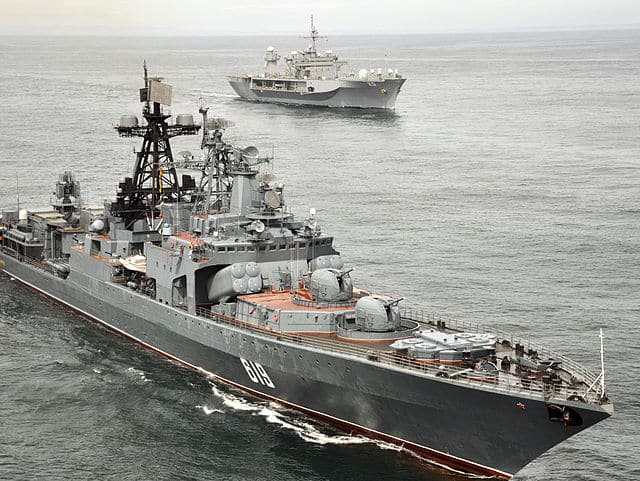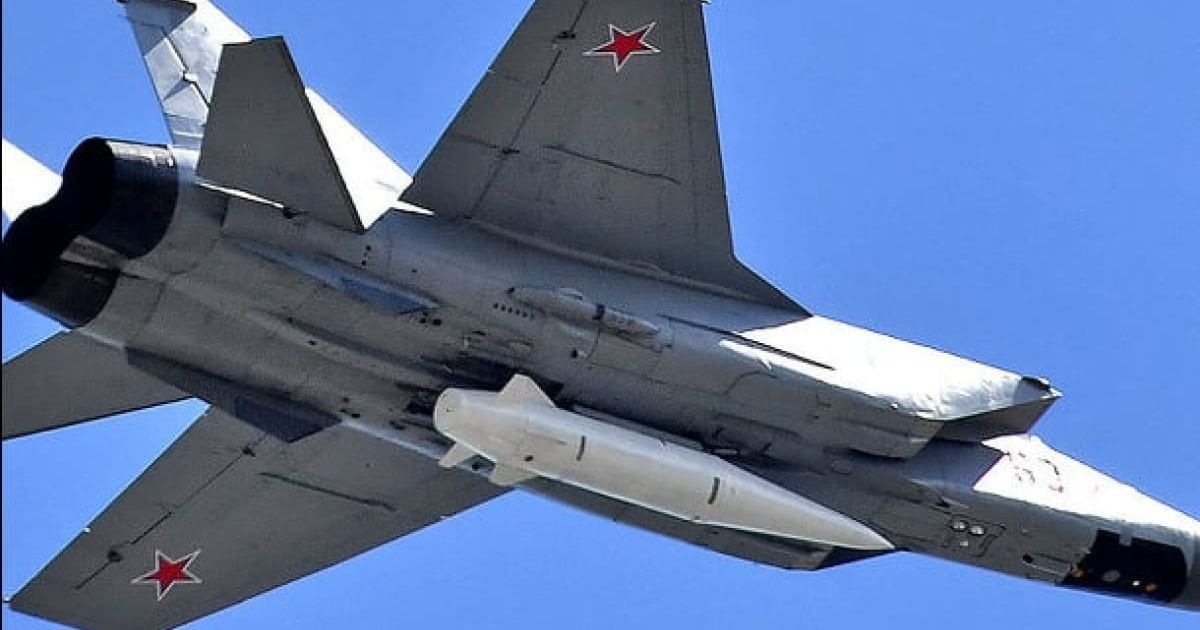Table of Contents
Since the end of April, Russia has resumed mass shelling of Ukraine. After a failed attempt to destroy the energy system, it is evident that Russians have stockpiled missiles for other tasks. Details about Russia’s plans and the shattered Russian myth used to intimidate NATO are presented in the material by RBC-Ukraine.
Starting on April 28, Russia resumed the shelling of Ukraine. After a 50-day pause, the Russian army carried out 6 massive attacks on the relatively rear regions of the country. The capital of Ukraine has been hit the hardest, having already experienced 10 attacks with drones and missiles since the end of April.
The latest series of Russian shelling has lower intensity — for three weeks, the Russians (at least until today) have not accumulated a salvo of over 30 missiles. However, the strikes are occurring with greater frequency. Air sirens sound almost every night in Ukraine, emphasizing the terrorist nature of these attacks. However, this is likely just a secondary objective.
During the autumn-winter campaign, Russians launched nearly 900 missiles in an attempt to leave Ukrainians without electricity, water, and heating. They failed in this mission at the cost of depleting their supplies of precision weapons. Hence, the prolonged pause in shelling appears to be explained by the need to replenish their missile arsenal for new tasks and targets. And these are no longer objects of the energy infrastructure.
Destroying myths
The first interesting event took place at night on May 4. After the incident with the drones over the Kremlin, in which Moscow accused Kyiv and the United States, the Russian radical public demanded “blood.” So, the next night, the Russian army launched a seemingly typical drone attack on the Kyiv region.
In the same morning, the Kyiv Military Administration reported that, presumably, ballistic weapons had also been shot down over the capital, which was previously considered impossible for Ukrainian air defense systems. Two days later, the Air Force clarified that it was not just ballistic weapons but the vaunted by Russian troops “hypersonic” missile Kh-47M2 Kinzhal that was shot down in the sky above Kyiv using the Patriot system.
Kremlin’s propaganda initially did not cover the night attack at all and then began to claim that it was not the Kinzhal missile. However, after 12 days, Russians repeated the shelling of Kyiv, combining different ballistic weapons for the first time. According to the General Staff’s data, the Russian army launched six Kinzhal missiles and ten missiles from the S-400 and Iskander-M systems from the territory and airspace of Russia. This entire set was flying toward the capital simultaneously with several Kalibr missiles and Shahed drones and, according to the Air Force, was successfully shot down.
The destruction of 6 Kinzhal missiles is an undeniably unique event for both Ukrainian military forces, the producers of the Patriot air defense system, and Russians themselves. The thing is this missile, just like its prototype Iskander, was initially developed specifically to counter the “umbrella” of the Patriot system in the event of a war with the United States and NATO. When discussing the creation of the Kinzhal missile in 2018, Putin claimed that this missile supposedly “guarantees the ability to overcome all existing and future air defense and missile defense systems.” However, in practice, it turned out not to be the case, and it is difficult to classify it as a true hypersonic missile in the conventional definition of the term.
Aviation expert and former test engineer at Antonov Design Bureau, Kostiantyn Kryvolap, explains: a hypersonic missile is considered to be one that flies along a trajectory, maneuvers on that trajectory, and hits the target at hypersonic speeds. Hypersonic speed refers to a speed that is five or more times greater than the speed of sound, also known as Mach speed. Initially, the Kinzhal is launched into the sky by its carrier, the MiG-31K.
See also: Russia plans to create a new «elite» aviation group Storm with direct subordination to Moscow
“After the launch, it turns on its engine and gains speed, but the data on its speed varies. In Russia, they say that it allegedly reaches Mach 10. However, no one believes this. On the forums of Russian fanatics, it is said that it really gains a maximum of Mach 5 — Mach 5 with something. At this time, it has no connection with either GPS or GLONASS,” the expert says.
However, the missile does not maintain such high speeds throughout the entire flight. It needs to decelerate in order to engage in navigation and targeting. At such speeds, it is impossible to achieve precise maneuvering, which is why there is no confirmation of the high accuracy of the Kinzhal, clarified Kryvolap. When the missile descends towards the ground on a ballistic trajectory, its speed ranges from Mach 1.5 to 2.5, according to different estimates.
“So, it’s no longer hypersonic speed. For the Patriot system, it’s not even considered fast; its anti-missiles are faster,” added the interlocutor.
By the way, according to various sources, Russia has 6 operational MiG aircraft capable of carrying Kinzhal missiles, Kostiantyn Kryvolap mentioned. Considering that 1 MiG can carry only 1 such missile, it allows us to estimate the maximum salvo the Russian army is capable of launching in a single attack.
About Russian fables
In fact, the hypersonic Kinzhal is the result of either enormous Russian corruption or incompetence, or a combination of both. Moreover, Russians are about to release another “hypersonic weapon” from “there are no analogues” category, the Zircon missile, which is being created to counter NATO missile defense and seems to have the same problems.
Presumably, in order to save face and preserve image, the Russian Ministry of Defense decided to present the results of the Kinzhal attack on Kyiv in its own way. According to its version, the missiles allegedly managed to destroy five Patriot launcher systems and a key component of this system — the radar. The Patriot system itself (which consists of a radar, a command center, several support vehicles, and up to 8 launcher systems) can be dispersed over distances of tens of kilometers, making it impossible to destroy the entire complex in one strike.
Furthermore, as interpreted by the Russian Ministry of Defense, during the same shelling, they supposedly managed to destroy a whole range of Western weapons and equipment. It is worth mentioning that the official Russian propaganda has previously boasted remarkable “achievements,” such as the destruction of Storm Shadow missiles, HIMARS systems, and Abrams tanks, even though the latter are not even present in the Ukrainian army.
Foreign media outlets, including CNN and AFP, citing American sources, reported that the Patriot system could indeed have suffered damage, but despite this, it remains operational. According to CNN, American officials do not believe that the system was directly hit by the Russian Kinzhal missile or any other ammunition. Informed sources in military circles, as reported by RBC-Ukraine, affirm that the system did not sustain “any critical damage that would require it to be dismantled or taken for repairs.”
Yesterday, the Pentagon confirmed the information about the damage and stated that the system has already been repaired. According to Yuriy Ihnat, the spokesperson of the Air Force Command, the Patriot system was operational and on active duty during the night shelling that took place from May 17th to May 18th.
According to one version, fragments of a downed missile could have struck a component of the Patriot system. If during the interception of the hostile target, its hull or engine were damaged, but the warhead remained intact, it is quite possible that the missile could have fallen nearby and detonated. Alternatively, in theory, another possibility is that if the missile was intercepted at a very low altitude, its debris could have hit one of the components or launchers of the Patriot system.
If we combine the two Kinzhal attacks on the capital into one scenario, it suggests a possible version of events and Russian objectives. Perhaps during the May 4th attack, Russians were unaware that the Kyiv region was protected by the Patriot system, or they underestimated its combat capabilities. Therefore, the launch of a single Kinzhal missile could have been purely a demonstrative attempt at “revenge” for the drone incident over the Kremlin. According to the assessment of the Main Intelligence Directorate, this incident is believed to be the work of Russians themselves.
See also: Hacking the Lancet. Ways to defend against a Russian drone
“They are trying to portray the necessity of war and the need for defense against Ukraine and the entire Western world. They lost this information operation; they failed to achieve the results they expected. However, since it has already happened and to avoid further reputational damage, Russians supposedly had to retaliate. In doing so, they were supposed to destroy something significant,” said Andriy Chernyak, representative of the Main Intelligence Directorate of the Ministry of Defense of Ukraine.
He added that since they failed to destroy anything, Russians are trying hard to prove that they were able to “take revenge” and destroy the Patriot system. It can be assumed that during the second attack, from May 15 to 16, the Patriot system was indeed the Russian target. Supporting this version is the mix of different missiles launched, either for breaking through the defense and destroying the system or, at the very least, assessing its effectiveness. But everything turned out to be completely out of the Russians’ favor.
Russia’s new targets
It is highly likely that the Russian army will not stop at attempts to disable the Patriot system. Perhaps, Russians will also target another modern complex, the SAMP/T, which has similar characteristics and anti-missile capabilities. However, these targets and objectives of the Russian army are not limited.
“Previously, they failed to cripple our energy system, and now they have entirely different priorities — to disrupt our plans and preparations for active operations during the spring-summer campaign,” said Vadym Skibitskyi, the Deputy Chief of the Main Intelligence Directorate, as reported by RBC-Ukraine.
According to him, currently, Russians are using missile weapons not only in attempts to target air defense systems but also against our command centers, supply routes, ammunition and equipment depots, fuel storage facilities, and areas of troops concentration. Additionally, as clarified by Andriy Chernyak, representative of the Main Intelligence Directorate of the Ministry of Defense of Ukraine, the Russian army also aims to force us to withdraw our air defense systems from the front lines by striking hypothetically rear regions. In Kryvolap’s opinion, this could now be one of the main objectives of the Russian army — to allow aircraft to operate more freely directly on the front lines.
“Obviously, this is what they are trying to achieve by shelling, for example, Kyiv. After all, we do not have enough air defense systems either for the frontline or for the rest of Ukraine. According to various estimates, such a country needs 10-20 Patriot systems,” the expert suggested.
Russians have indeed exhausted a significant stockpile of missile weapons. However, they have managed to establish production, Vadym Skibitsky said. He clarified: the fragments of the missiles used by the Russian army indicate that they have just come off the assembly line. These are munitions manufactured in the first quarter of 2023.
“They bring in Kalibr missiles to the occupied Crimea at least twice a month. Currently, Russians are capable of producing about 25 Kalibr missiles per month, 35 units of the Kh-101, 2 units of the Kinzhal per month, and 5 units of the 9M723 ballistic missiles for the Iskander-M. Thus, they manage to import components for missile production despite international sanctions,” explained the Deputy Chief of the Main Intelligence Directorate.
The intelligence believes that Russia’s missile campaign will continue as long as it has the resources. They are likely to combine means and resort to new experiments. Therefore, our primary goal now is to continue strengthening Ukrainian air defense at the same pace. It seems that there is already a Western consensus on this issue.
Originally posted on RBC-Ukraine. Translated and edited by the UaPosition – Ukrainian news and analytics website




